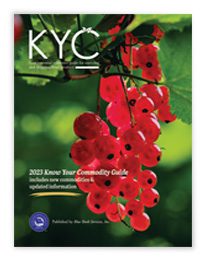Lettuce and Leafy Greens Market Summary (greenhouse)


Image: Daniel Reiner/Shutterstock.com
Lettuce and Leafy Greens Market Overview (greenhouse)
Lettuce, a member of the daisy family Asteraceae, was originally domesticated in Egypt several millennia ago. It proliferated throughout the ancient world and remains popular today, its production second only to potatoes among fresh vegetables in the United States.
Americans annually consume 30 pounds of lettuce per capita, a fivefold increase from the previous century. The ever-increasing selection of bagged salad mixes has added immeasurably to this growth.
Although the majority of lettuce produced and consumed in the United States is field grown, the market for greenhouse lettuce, leafy greens, and herbs continues to expand. A number of states are experiencing growth as significant producers, especially in the Northeast and Midwest. Imports contribute to supply, but to a far lesser degree.
Types & Varieties of Lettuce & Leafy Greens (greenhouse)
Greenhouses are excellent venues to produce a broad array of lettuce, leafy greens, and herbs. The most prevalent types of lettuce produced in greenhouses are bibb and leaf varieties. Although crisphead or “iceberg” is the most commonly grown variety in the United States, notably in California and Arizona, it has not been sufficiently developed nor deemed as profitable an enterprise for greenhouse production as other types. Bibb lettuce, also known as butterhead or Boston lettuce, dominates much greenhouse lettuce production. Characterized by its delicacy, mild or sweet flavor, ruffled external appearance, and light green interior, bibb is harvested at full-head size (except for specifically bred baby varieties). Cegolaine, Rosaine, Roxy, and Mirlo are typical varieties for greenhouse production. Leaf lettuce includes both red and green varieties, with loose, thin, colorful leaves, ranging from delicate to slightly bitter depending on variety. Waldmann’s Dark Green, Grand Rapids, and Ruby Red are common greenhouse types. Arugula, kale, spinach, romaine, and many baby varieties are also cultivated in greenhouses to varying degree.
SEASONAL AVAILABILITY |
| Greenhouses large and small throughout the United States and in other countries provide a steady supply of year-round lettuce and leafy greens. |
The Cultivation of Lettuce & Leafy Greens (greenhouse)
Numerous methods exist for cultivating lettuce in greenhouses. The most popular techniques include raft systems, which involve Styrofoam boards suspended in nutrient solution; aeroponic systems, which entail exposing the plant roots and misting them with nutrient solution to conserve water; and hydroponic systems, which grow plants in water and nutrient solutions absent of soil. After seeding, lettuce typically requires one month before transplanting. The timeline from seeding to harvest will range from 8 to 10 weeks in spring and 12 to 15 weeks in winter. For maximum yield, low light intensity and cool temperatures constitute optimal conditions for greenhouse production. Temperature ranges of 60 to 65°F in the day and 50 to 55°F should be maintained, since higher temperatures will stunt development. Artificial lighting is discouraged because its monetary and energy expenditure surpass the marginal value attained from increased growth rate. Lettuce requires ample and carefully proscribed nutrition. The pH of the solution should range from 5.0 to 6.0 and maintain a salt level below 3500 ppm (parts per million). These two elements most prominently affect greenhouse lettuce development and should consequently be evaluated regularly. Application of the solution should cover the entire root.

